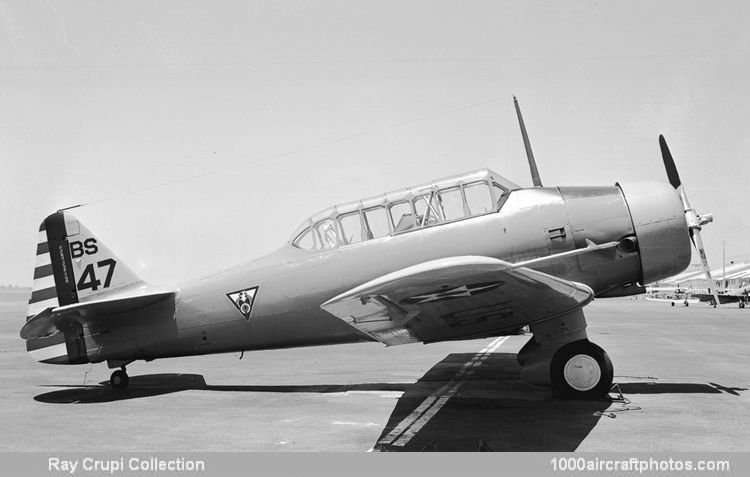09/30/2010. Remarks by Johan Visschedijk: "North American Aviation Inc. entered the training aircraft field in 1935 with a privately financed prototype of its NA-16 design, built and flown in Baltimore with the civil registrations NX2080. Evaluated at Wright Field, the NA-16 was regarded as the closest approach to tactical aircraft yet achieved in a trainer. With few changes the North American design was adopted late in 1935 as a standard Army basic trainer, designated BT-9.
On the strength of the first order for 42 aircraft North American moved into new production facilities at Inglewood (Los Angeles), California, where the first Model NA-19 BT-9 flew in April 1936. The engine was the 400 hp Wright R-975-7 Whirlwind. The first BT-9 contract was quickly followed by a second, for 40 Model NA-19A BT-9As, distinguished by the addition of one fixed forward firing gun and a recording camera, and a flexible gun in the rear cockpit.
The 1937 model was the Model NA-23 BT-9B again distinguished by only minor changes. North American built 117 of this version, and concluded the series with 67 Model NA-29 BT-9C procured for the Organized Reserve. One BT-9B was converted to the Model NA-26 BT-9D in 1938, with new wing panels and tail unit which had by then been developed for the BC-1A. A BT-9C (s/n 37-383) fitted with a 600 hp Pratt & Whitney R-1340 in 1938 was redesignated Y1BT-10.
Features of the BC-1A, including the new outer wing panels and new tail unit, together with a metal-covered rear fuselage, identified the Model NA-58 BT-14, which was ordered in 1940 as an improved BT-9. North American built 251 BT-14s with 450 hp Pratt & Whitney R-985-25 engines, and later converted 27 of these to BT-14As with 400 hp R-985-11s.
The pictured aircraft is shown in the markings of the 32nd Bomb Squadron/19th Bomb Group, while based at Albuquerque, New Mexico, USA."
